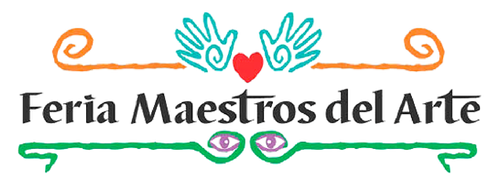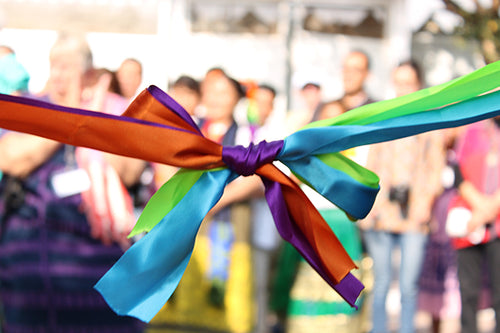FAQ: About Mexican Folk Art (Lingo)
What is a nicho?
Made from mixed media and traditionally combine elements from Roman Catholicism, mestizo spirituality, and popular culture. They may be decorative boxes set upon tables and pedestals to display religious icons.
What is an alebrije?
Brightly colored Mexican folk art sculptures of fantastical (fantasy/mythical) creatures. The first alebrijes, along with the invention of the term, originated with Mexico City cartonero (heavy paper) Pedro Linares. Subsequently, the wood carvers of Oaxaca adopted the name and began making carved wood alebrijes.
How do I care for my textiles?
Most all Mexican textiles can be washed the same as your regular clothing. Or, you may choose to have the piece dry cleaned. Fabrics are pre-shrunk so that is not normally a problem.
What is barro bruñido?
A decorative technique that in pottery consists of rubbing the clay surface of a ceramic piece until it achieves a polished and shiny appearance, and a certain tactile softness. Used since the Final Bronze as a finishing technique.
What is barro betus?
Characterized by vibrant colors that give the ceramics a whimsical look. This style derives its name from the betus oil the clayware is immersed in before it is fired. The oil, which is made of a resin extracted from pine trees, gives the painted pottery a brilliant sheen.
What is barro canelo?
Type of bruñido named for the color the fired clay turns out, which is various shades of cinnamon (canela in Spanish). It is burnished with lard and painted with ochre and brown tones.
What is a huipil?
Straight slipover one-piece garment that is made by folding a rectangle of material end to end, sewing up the straight sides but leaving openings near the folded top for the arms, and cutting a slit or a square in the center of the fold to furnish an opening for the head, often decorated with embroidery, and is worn as a blouse or dress by indigenous women in Mexico.
What are high-fire ceramics?
Stoneware clay fired to a temperature between 1,100°C and 1,280°C (2,012°F – 2,336°F). The clay by itself becomes non-porous, in cases even vitrified. When fired in high fire and with the bond of glazing, the clay becomes a strong and durable material.
What is barro bruñido al negativo, esgrafiado bajo relieve or el decorativo en positive?
Working in the negative requires the knowledge of a specialist craftsman, given the complexity and richness of form and decoration that is found on the pieces. First, a box is built and filled with packed silt. With his hands and simple tools, he carves a design into the silt, which will become the exterior of the vessel. From there, he pours slip (with roughly the density of a thick milk shake) into the carved cavity. The slip dries slightly over several hours until all that is still liquid is removed.
What is a Catrina?
An elegantly dressed skeleton figure; used as a symbol of the Day of the Dead (Día de los Muertos) celebrations.
What is Ocumicho famous for?
Prize-winning devil figurines that captivate people from all over the world with an enchanting universe of mischievous and playful characters.What is a piña (pineapple) pot?
Elisa Madrigal, mother of maestro Hilario Alejos Madrigal, is credited with making the first pineapple pot. She began crafting poncheras (punch bowls) in the shape of pineapples, called piñas in Spanish. Their detailed work includes pointed leaves and a flaky furface texture similar to a pineapple.
What is an ex-voto?
A votive offering given in order to fulfill a vowng to a saint or divinity. It can be a painting used as an intervention in personal calamities.
What is laca or maque?
Lacquerware is an ancient technique and art form in Mexico. Laca, from the Persian term lak, (evolved to shellac), and maque, from the Japanese term, maki-e, and from the Arab word “sumac”, is a functional and decorative art, developed to create a protective coating or veneer over a surface, making it impermeable and beautiful.
What is alpaca silver?
An alloy of copper, nickel, and zinc used to make silverware and decorative objects. It contains no silver.
What is amate?
An ancient tradition of paper making from Mexico, made from the pulp of the fig and mulberry trees. To make amate, the outer tree bark is peeled and the inner bark is boiled and soaked in water overnight, then beaten with a smooth flat stone until it becomes pulp.What is a borla?
A decoration, consisting of a hanging bunch of threads tied firmly at one end and loose at the other end — a pompom.
What is popotillo or straw painting?
Colored straw mosaics from the Spanish name for sacaton grass, Sporobolus, or popote de cambray. Before European contact, exclusively natural dyes were used and the straw was soaked in aguamiel or agave juice.
What is Otomi embroidery?
Style of embroidery created by the Otomi people of central Mexico that has become extremely popular. The designs are filled with symbols based on native flora and fauna, local beliefs and even primitive cave drawings found in the Hidalgo region where many of the Otomi reside.

